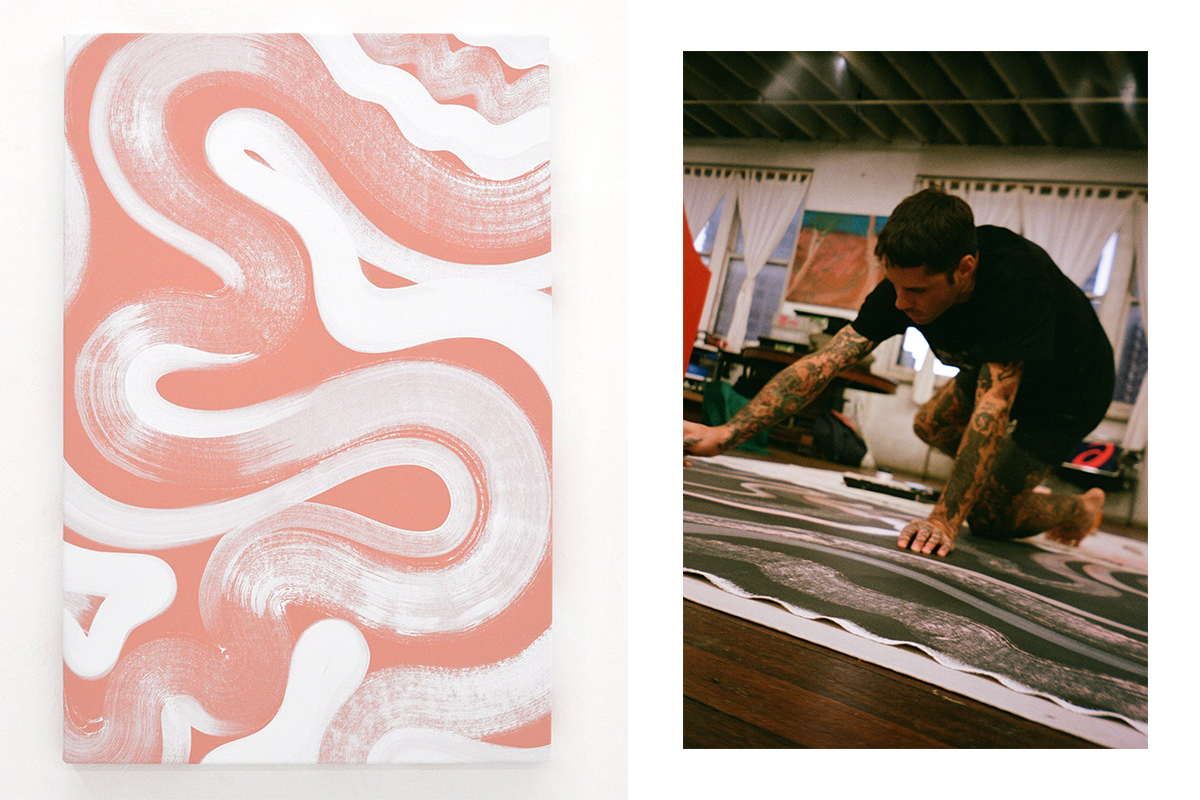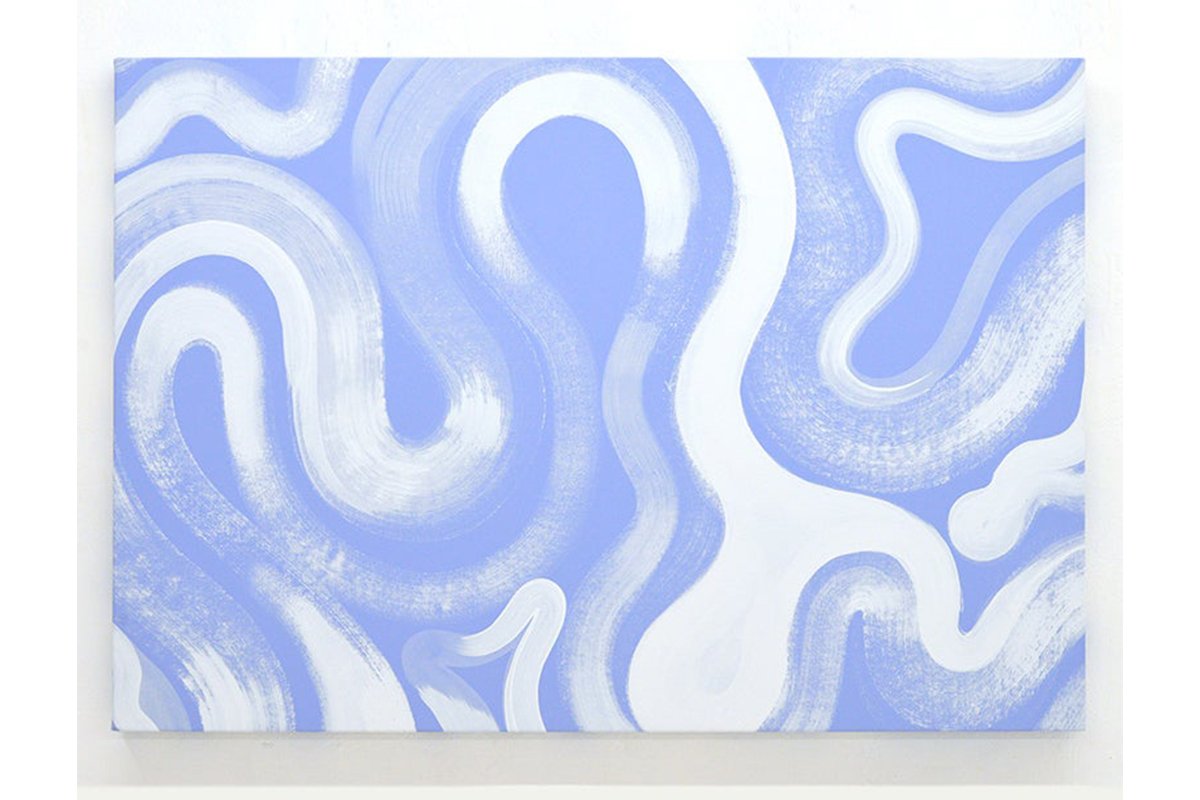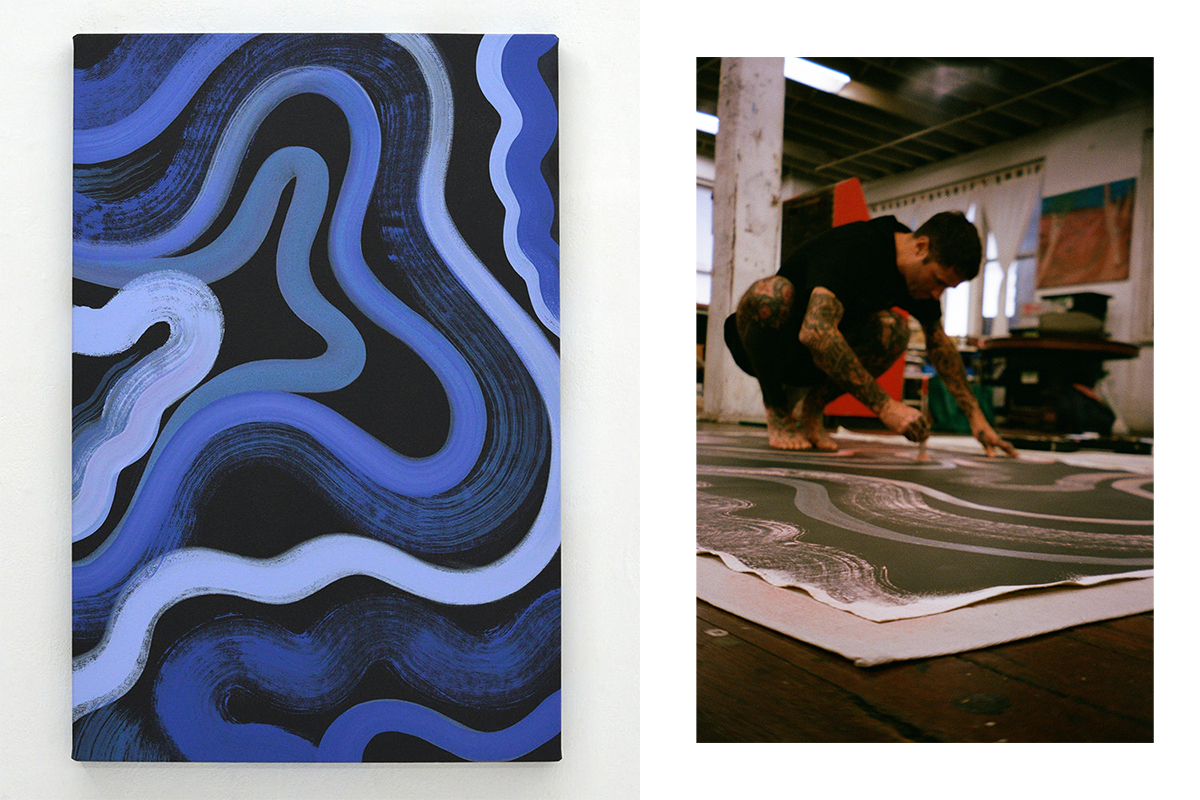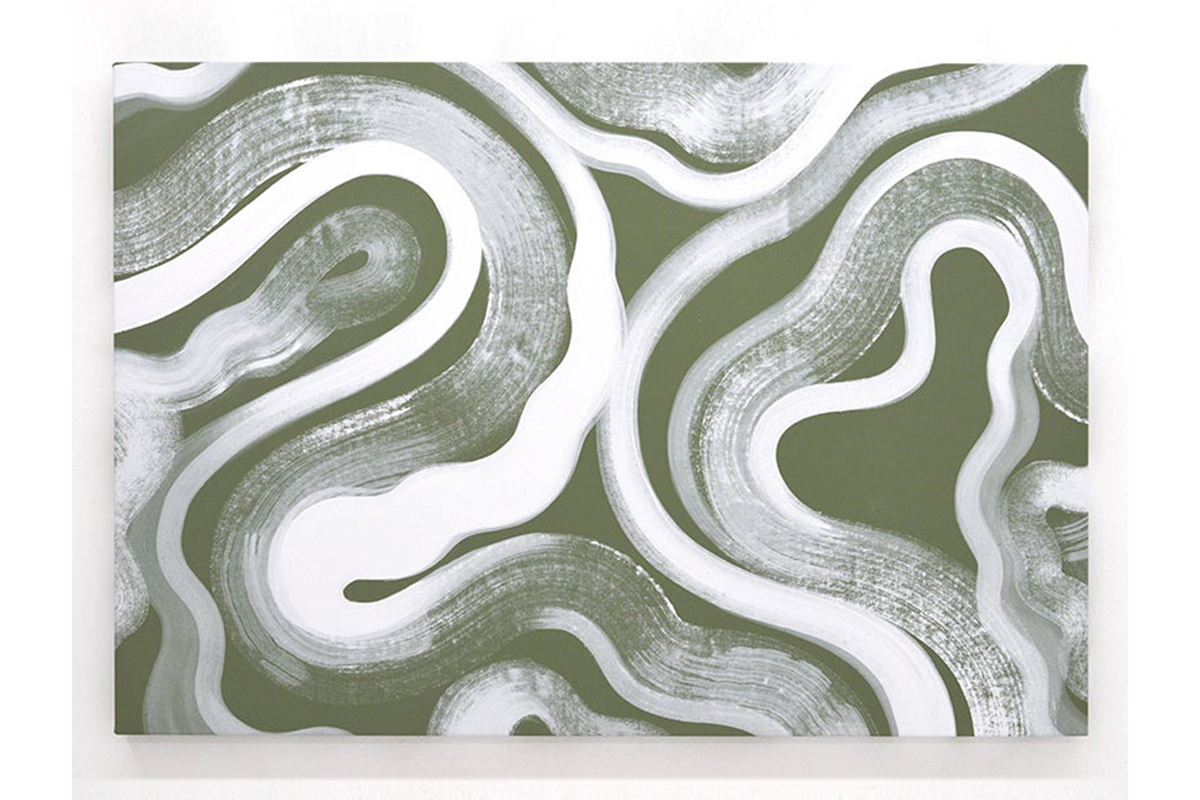
"I don’t think it was lost or forgotten, it was purposely destroyed. I hear stories of older mob who were punished for speaking in language or painting, singing and performing ceremony. What better way to oppress than to take away a culture's identity and force assimilation? Sharing our individual stories as well as letting each other know that we aren’t alone. No one person is going to keep all this alive."
Amidst all our worldly chaos, it almost feels rare to find moments of reprieve. It's also rare to come across an artist, who humbly through their work alone, can softly render us into quieter spaces between thought and time. It has been said through life, we have very little control over anything and the gifts we bear, thread through us seamlessly and there is much to say about the beauty of watching one surrender, listen and create intuitively. And delving us all deeper into this experience is the work of artist Shaun Daniel Allen, otherwise known as Shal; who speaks with us about intimacy, cultural oppression and returning to water in anticipation of his upcoming show, Balun, opening this Friday 21 May at China Heights Gallery.

The title of your show Balun translates to River in the Yugambeh dialect. How did this title and body of work connect and come to fruition for you?
The title Balun connected itself to my work as it evolved from being a form of meditative art I was doing on my garage floor. I started these paintings after a turbulent year in my work and my personal life, and where I felt the need to make something that was far removed from the structured ways I was adhering to in my other creative outlets. I am a huge fan of the process and how these things take shape, but at the time I was in need of something that felt more intuitive. Something to help me take my mind off things.
Your work remains highly reminiscent of the movements of water and the ebbs and flow of nature and life. How did this come to find its way into your style of painting and when did expressing this idea of water first resonate with you?
There’s always going to be ups and downs, and at the time when my work was beginning to take shape for Balun, this was something I was reminding myself of daily. Water is the biggest reset I can think of; it washes away all the unnecessary stresses and it continually reminds me to embrace and enjoy the simple things in life. It's so ridiculously important to who I am as a person, that when I started painting these shapes, they instantly told me that they were water. It wasn't something I consciously planned for, just something that happened. Perhaps I needed something more than just the physical act of being immersed in water to find the healing I was looking for - who knows? I spent so much of my time surfing and living around water that it's become a big part of who I am as a person. In times of crisis, distress or happiness, water is what I find myself returning too.

Previous to Balun, you had worked alongside other indigenous artists. You had mentioned how during the colonisation, a lot of the art, culture, music and dance sacred to the Indigenous people became lost and forgotten. Has this informed the way you work, think or put things into context as someone who is producing art today?
I don’t think it was lost or forgotten, it was purposely destroyed. I hear stories of older mob who were punished for speaking in language or painting, singing and performing ceremony. What better way to oppress than to take away a culture's identity and force assimilation?
Not long ago, I was lucky enough to go for a walk with Hague and Axel Best - two very proud Yugambeh fullas, and something they had said really stuck with me. It was in regards to how “lucky” we were that we kept our language at a time where so many other aspects of our culture from the area had been lost, including a lot of the art. I have no idea how to convey so many things in a traditional way because it was eradicated with colonisation. It’s something I’m continuously thinking about. I’m clearly making art that feels more contemporary when it comes to our culture and representing who I am and where I come from, it’s just unfortunate that even if I wanted to communicate my work in a traditional way, I will never be sure the practices are 100% accurate.
I’m so grateful to have found other mob to talk with, and have considered myself so lucky to have been able to work alongside so many talented indigenous artists. Sharing our individual stories as well as letting each other know that we aren’t alone. No one person is going to keep all this alive. I’m always in awe of how hard a lot of mob are working in reviving the language, our song, our dance and our art; this culture that has been pushed to the brink of extinction continually over the last 200+ years. And their inclusion of everyone and anyone who is interested. I feel like making my work and reaching out to other mob is how I keep pushing forward. How I will find my truths, how I will find my story. It took a lot for me to think about who I really am, what my heritage is and why I am the way I am. I can’t speak for anyone but myself, but it’s an endless journey to try and understand. I hope even through my work, I can help others to do the same.
You have recently started producing work using Ochre. Could you tell us more about Ochre and what drew you to working with this material and its process?
I was lucky enough to be introduced to working with Ochre through Uncle Rick just before I left the coast. No other medium gives me the feeling Ochre does and it’s something I wanted and will continue to explore. Using the earth to make these markings and how special that is is something I don’t think I can ever explain. There’s a grounding that comes from getting your hands dirty and mixing the Ochres together. The colours. The textures. All becoming a part of a bigger story - much bigger than me. Natural pigments just keep drawing me in and is something I can't deny.

In contrast, coming from a background in music and tattoo, how has painting taken up its role in your life as opposed to your other avenues of creative expression? Are there vast similarities or any notable differences?
Music and tattooing are the two biggest things in my life. I began painting and drawing because of tattooing, but those processes are vastly different to the ones I practice when I'm creating my paintings. They all work together, in that both music and tattooing have shaped a lot of how I work. Just the repetition and putting in time, continually making mistakes and trying things over and over again until it feels complete. Those practices have taught me resiliency and to trust myself enough to create things to put out into the world, to just keep moving forward. Now days, painting has taken up more space in my life than I ever imagined it would.
And lastly, in the world of Shaun Daniel Allen, what is informing you, your work and your world today?
My peers and my stupidly encouraging circle of friends - all of whom I am continually in awe of and who keep pushing me forward. Honestly, I'm just always looking for those moments in life where the world stands still and I can feel everything and nothing at the same time.
Balun by Shaun Daniel Allen opens this Friday, 21st May 6-8pm at China Heights Gallery.



